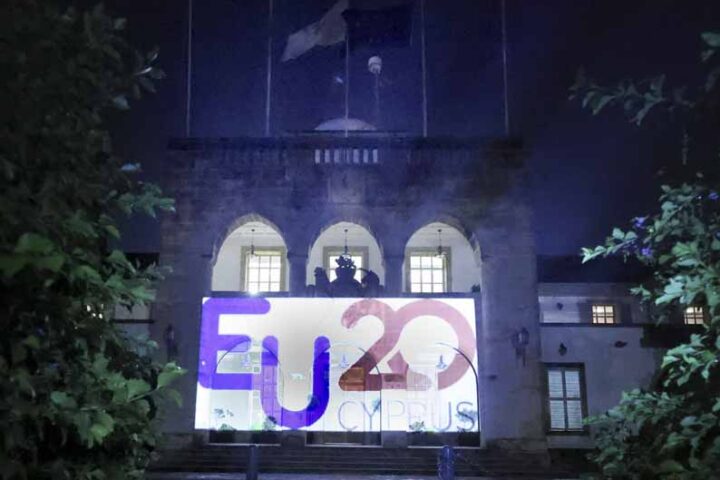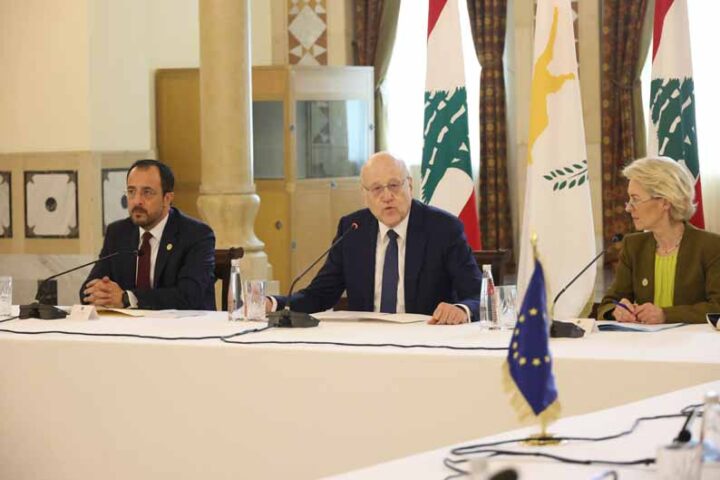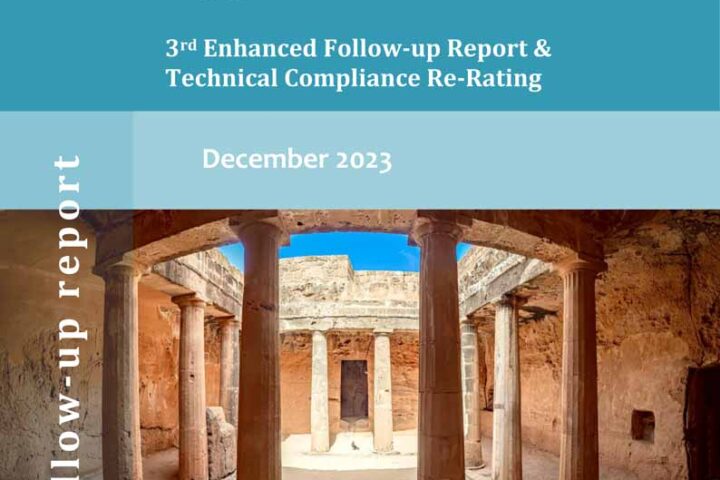The prospects of terminating Cyprus’ energy isolation through the creation of an energy union, together with its potential impact on enhancing energy security and contributing to lower energy costs for consumers were discussed during a seminar at the EU House in Nicosia.
.jpg) Already, three projects, a subsea cable and two natural gas projects, have neen included in the European Commission’s list of Projects of Common Interest (PCIs).
Already, three projects, a subsea cable and two natural gas projects, have neen included in the European Commission’s list of Projects of Common Interest (PCIs).
In his remarks at the conference, Energy Minister Yiorgos Lakkotrypis said that the government continues the implementation of its strategy to exploit the hydrocarbon reserves, discovered in its exclusive economic zone. He also said that the ultimate goal is to achieve lower energy prices for consumers.
The event was also addressed by MEP Neoklis Sylikiotis, who welcomed the inclusion of several energy projects of Cypriot interest in a European Commission priority list, unveiled a fortnight ago.
Lakkotrypis referred to the 10% electricity interconnection target, which forms part of the Energy Union goals, saying that this needs to be achieved by all member states. Cyprus must be part of the internal energy market, he noted, adding that this facilitates Nicosia’s energy plans.
He further talked on the aspect of upholding member states’ sovereign rights, with regard to their energy sources, adding that this provides Cyprus the opportunity to properly utilise its local resources.
The Minister also talked about Cyprus’ energy isolation and the market’s small size which impeded competitiveness to a significant degree, resulting in higher fuel and energy prices compared to other EU countries.
Speaking on energy infrastructure, the Minister referred to the projects that have been included in a list of 195 key energy "projects of common interest".
 The list includes the “EuroAsia Interconnector”, a joint venture between Greece’s DEH/PPC, Quantum Energy and the Israel Electric Corp., that will provide for the interconnection of Cyprus with Israel and Greece through an electric cable, as well as to two natural gas projects.
The list includes the “EuroAsia Interconnector”, a joint venture between Greece’s DEH/PPC, Quantum Energy and the Israel Electric Corp., that will provide for the interconnection of Cyprus with Israel and Greece through an electric cable, as well as to two natural gas projects.
These projects can benefit from speedy licensing and environmental assessment procedures, and may eventually receive funding from the "Connecting Europe" facility.
Speaking on Nicosia’s energy designs, the Minister noted that contacts were intensifying between his Ministry and the companies involved in the development of the block 12 reservoir, in order to formulate the Development and Production Plan.
Through this, Cyprus will become a natural gas producing country, he noted.
Referring to the discovery of the Egyptian offshore reservoir in "Zohr", Lakkotrypis spoke of "rapid developments" in the region and said that the upgraded energy profile of the eastern Mediterranean has a positive impact for Cyprus as well.
AKEL and European United Left MEP Neoklis Sylikiotis said that hydrocarbon findings in the wider region give Cyprus the chance to play an important role for the Union’s energy developments. It is an opportunity that should not be missed, he noted.
"Natural gas constitutes potentially the most important hope that our state and people ever had for social prosperity, economic development and political upgrading," the Cypriot MEP has noted.
On the prospects of the "Aphrodite" reservoir in block 12, Sylikiotis, a former Commerce Minister who initiated the offshore explorationprogramme, said significant quantities have been discovered that could be exported, noting also the dedication required to implement an ambitious and realistic strategic planning, that will turn Cyprus into a regional energy hub.
On the energy projects of Cypriot interest, the MEP said that approving the necessary studies was important, however significant work had still to be done.
Referring to the creation of an LNG terminal, Sylikiotis said the project should not be abandoned, since it would turn Cyprus into a regional liquefaction point for global markets.
The seminar was also addressed by the Head of the European Parliament Office in Cyprus Andreas Kettis and the Head of the European Commission Representation in Cyprus Georgios Markopouliotis, who said that in view of the Paris Climate Summit, the EU’s commitment to reduce carbon emission by at least 40% by the year 2030 now seems realistic which will also contribute to energy security and help protect the environment.
The design for the EuroAsia Interconnector project has already been included in the EU’s Projects of Common Interest.
Undersea cables are laid in trenches along the seabed to prevent their disturbance by ships’ anchors. The work is carried out by robotic technology. The first phase of the project involves connecting Crete with Athens and Cyprus with Israel, while the second phase will see the linking of Crete with Cyprus. The cable will transfer electricity produced from natural gas in both directions.
Greece’s Hellenic Cables is set to participate in the EUR 3.5 bln project. The underwater cable with a total length of some 1,500 kilometers will be laid at depths of up to 2,000 meters below sea level with a capacity of 2,000 megawatts.
“The demand for electricity in Europe is phenomenal… we think that in the future even a second cable might be required,” said Nasos Ktorides, chairman of DEH-Quantum Energy, a joint venture of Cyprus’ Quantum Energy and Greece’s Public Power Corporation (PPC).
“Our target is to have completed the first phase of the project within 36 months from the launch, for the first connection in 2017,” Ktorides had stated in 2013.
The link would be able to transmit power in either direction and would primarily focus on electricity generated from natural gas. But electricity from renewable sources could also potentially feed into the network, Ktorides said.







